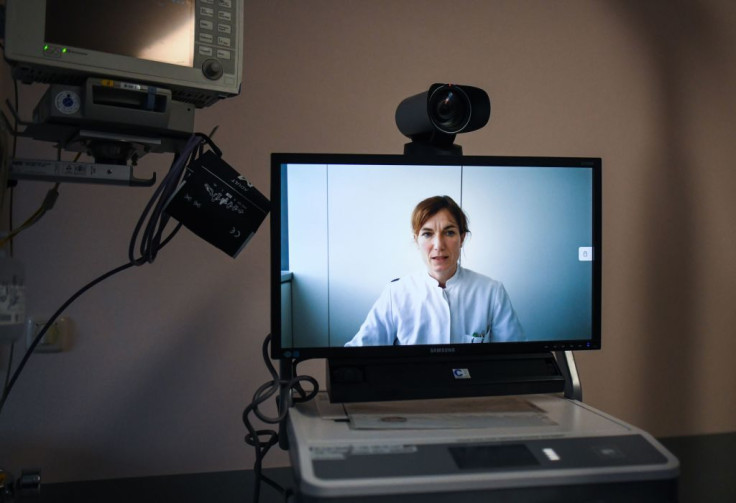
Telehealth can save lives, and if we do not treat it as an urgent, system-wide priority, we will keep losing people to distance, cost, and bureaucracy. I say that as a clinician who has seen patients die from gaps that a phone call, a video check-in, or a bridge prescription could have closed. If you think telehealth is an optional convenience, think again. It will modernize the United States health system, which is unfortunately still organized around paper, car keys, and siloed clinics.
The landscape I see every day is a country with extraordinary medical talent scattered across competing systems that refuse to talk to one another. We trail nations that give patients a single digital front door. The United Kingdom's National Health Service (NHS), for example, has been steadily building integrated online records and an app that lets patients see notes and labs in one place. That centralized access translates to better preventative care and fewer avoidable hospital visits.
Meanwhile, in the U.S., millions juggle multiple portals, pharmacies, and specialists who can't see one another's notes. That fragmentation wastes money, fuels Big Pharma's pricing power, and leaves patients adrift. That's why I support the mission of leaders like Secretary Robert F. Kennedy Jr. and Dr. Mehmet Oz. They're committed to transparency, prevention, and tackling the root causes of diseases, hallmarks of truly compassionate and effective healthcare.
So, why is telehealth one of the solutions to this broken system? Because it solves everyday barriers. Financially, it cuts travel, parking, and lost wages costs for people who can't afford an extra day off or a $50 taxi. And the savings go deeper. A study found that although telehealth patients initially had higher costs than in-person patients, their average monthly health care expenses dropped by 61% (from $1,099 to just $425) between January 2020 and February 2021.
Physically, it removes the dangerous logistics of getting an elderly, frail, or wheelchair-dependent person out of the house in winter, up stairs, and into a waiting room. Clinically, telehealth is an efficient triage tool. Many routine follow-ups, medication checks, nutritional counseling, and mental health visits can be done remotely so that in-person visits are reserved for procedures and acute problems. These are the outcomes when telemedicine is deployed thoughtfully.
But telehealth is not a panacea. Some exams and procedures will always demand a clinic room. But the question is not "telehealth or nothing?" It's "how do we use telehealth to reduce unnecessary visits, stabilize patients after discharge, and free up in-person resources for those who truly need them?" Right now, a lack of interoperable records, fragmented pharmacy data, and gatekeeping of patient information hinder telehealth's potential. But those are solvable engineering and policy problems, not reasons to give up.
We need policy and leadership that match the scale of this promise. Federal and state governments must insist on universal data-sharing standards, support broadband expansion, and make telehealth reimbursements durable. There's momentum. The Centers for Medicare & Medicaid Services (CMS) guidance and remote monitoring billing changes have started to codify telehealth into routine care. We must accelerate and expand that framework while protecting patient privacy and safety. Real reform will require political will, a sustained, government-led backbone that prevents corporations from hoarding data or pricing patients out of care.
If we fail, power and information will remain concentrated. Pharma companies will keep driving costs and skewing prescribing toward the most lucrative options instead of the cheapest, most effective ones. Patients will remain fragmented across clinics that treat health as a transaction. Adoption will lag. Older patients will mistrust platforms they've never used, low-income communities will be left offline, and community nonprofits will keep overspending on transportation when virtual visits could have worked.
That's why solutions must be practical and equity-focused. First, require that hospitals, primary care networks, and pharmacies participate in a national, interoperable health record standard so clinicians can see reconciled medication lists and labs in real-time. Second, fund community telepresenters and patient advocates who set up elderly or tech-shy patients for visits, translate medical language, and ensure follow-up. Third, guarantee continuity at discharge. This means a 30-day bridge prescription, a scheduled telehealth check within 72 hours, and a clear path to local pharmacy fills so recently released or discharged patients don't fall off the cliff.
This is not fantasy. Telehealth reduces missed appointments, improves chronic disease management, and expands access in rural areas, which are all key to prevention and recovery. A study in the National Center for Biotechnology Information (NCBI) confirms lower no-show rates. Even the Centers for Disease Control and Prevention (CDC) endorses telehealth for managing conditions like cardiovascular diseases and diabetes.
I came to these conclusions from the bedside. From prisons and jails where people are handed nothing on release. From hospice check-ins by video. From home health visits where we set up elderly patients to meet the cardiologist over a tablet. Patients do better when care is continuous, when notes and labs are visible across teams, and when the burden isn't on the sick to travel for every small thing.
Telehealth is a moral and practical imperative that can democratize care if we build the backbone, demand transparency, and insist that the system serve patients before profit. Do that, and we begin to close the lethal gaps. Ignore it, and we'll keep patching band-aids while people die waiting for a ride. The choice is ours, and time is short.
About the Author:
Robin Avalos, MMS, PA-C, is a physician associate and public health advocate focused on addiction medicine, correctional healthcare, and telehealth. Motivated by personal loss to the opioid crisis, she champions trauma-informed, patient-centered reform. Her work spans emergency response, neuroscience, and prison medicine, promoting telehealth to bridge care gaps and modernize U.S. healthcare.







